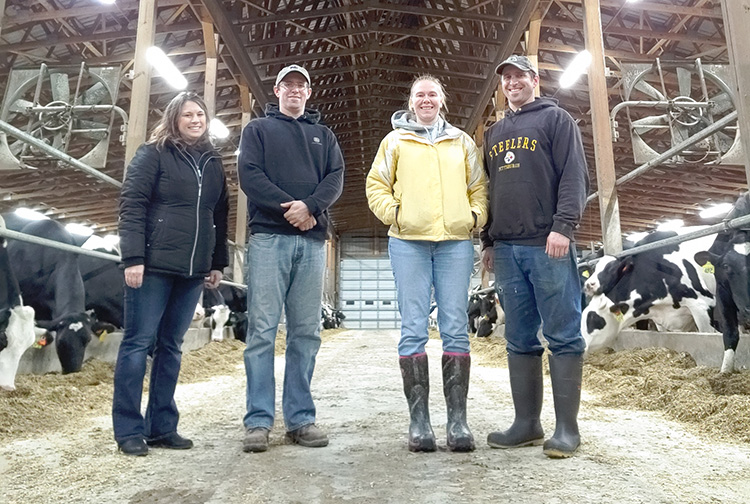
With heifer prices dropping to modern-day record lows in the last several years, many farms have been faced with the question of what to do with extra heifers that aren’t bound for their lactating herds.
For Zahncroft Dairy in Wolmelsdorf, Pa., the answer has been to simply sell those animals. “We try to avoid having calves born that we aren’t going to raise,” explained farm co-owner Katie Sattazahn. “We have sold some heifer calves at a couple of days old when we had a large amount of calves born at one time. We do not want to send any animals to our custom heifer raiser unless they are going to be part of our milking string. If we raise an animal that doesn’t meet our growth or health goals, we will consider culling them as early as possible,” she continued.
Three other farms shared additional insight in this Hoard’s Dairyman Intel as well as the Round Table “We breed for the number we need” found on pages 116 to 118 of the February 25, 2020, issue of Hoard’s Dairyman.
Here are responses from the other three participants regarding the question, “What do you do with extra heifers?”
Helt Dairy, Dane, Wis.: We currently generate most of our female pregnancies from our heifers because we breed two-thirds of the milking herd to beef. At the same time, we choose to breed our bottom 5% of heifers to beef in order to increase the rate of genetic gain from generation to generation. We identify those animals by utilizing genomics and our herd percentile ranking (HPR).
Oakridge Dairy, Ellington, Conn.: Our goal is to try not to create any extra heifers. When we do create extra heifers, we sell them to reduce our inventory. As long as we breakeven, we are happy because we don’t have any further inputs into them. When we started this program, we sold more heifers. We sold 1- or 2-month-old heifers or 5- or 6-month-old heifers, as well as some short-bred heifers. We did that to decrease our heifer inventories.
If we are culling heifers, we first look to any animals that aren’t growing at the rates we would like or that have struggled with lots of illness, especially pneumonia. From there, we might cull animals that have lower predicted parent averages.
SwissLane Farms, Alto, Mich.: Initially, as we looked to rightsize our young stock, we culled any heifers that didn’t meet our genetic benchmarks. At that time, we were calving 100 to 125 heifers per month. We sold calves based on low genomics and if any calves were not doing well. We are managing the heifer inventory at the point of breeding better now. We only have 70 to 75 calves born per month so we don’t need to sell calves. We do still sell a few calves into the high genetic merit market, though.
Read more on how these farms breed for the number they need in the February 25 issue.








